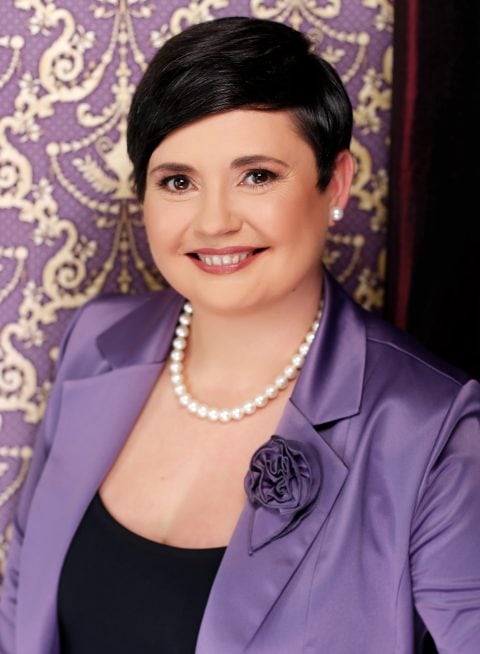Last week I attended a 5-day training course in Consulting with the Enneagram. The course was held in Dalkey, at the magnificent outskirts of Dublin. The Irish capital welcomed us with an unusually warm weather which, combined with the exciting topic and the lavish location promised us a unique experience. And unique it was indeed.
The course provider, Ginger Lapid Bogda, needs no introduction. The global authority for using the Enneagram as a people and organization development system in business, she is the author of numerous books and the founder of the Enneagram in Business network, a global sharing and support group of business professionals and Enneagram enthusiasts who work together to innovate how the Enneagram can support organizations with their challenges today.
Listening to Ginger is like taking a dive into a deep lake of wisdom. Strongly connected to what is going on in business today, Ginger can take the participants on a journey backwards, to places when organization development was still a developing theory. The amount, intensity and quality of her business experience and Enneagram expertise makes all her courses worthwhile. Therefore, no surprise that we were all looking forward – and up to Ginger – when the course started.
“Challenge your assumptions”
As all Ginger’s courses, the Consulting with the Enneagram was deep while staying practical. From the beginning we were split into three consulting groups. I had the honor to be in two roles – a consultant and, at the same time, a client for another group. In this article I will touch on both experiences.
In consulting Ginger operates by following a process that she calls the 6C: Contracting, Collecting, Communicating, Challenging, Changing and Closing. From the beginning, in the Contracting phase, she emphasized the importance of challenging our assumptions as consultants. As it showed later from my own client’s experience, this is a consulting aspect that should never be underestimated. Consultants are usually afraid to ask questions for fear of looking stupid. It is also easier – and enticing to some extent, as it can make you look fast and smart – to just assume that you understood the client correctly.
Here is where three things come into place that can help consultants to really take a step back and challenge their assumptions:
- Listening. What you need to do as a consultant is to really listen very carefully to what your client has to say.
- Asking humble questions. Clients and their businesses are where they are for a reason. They didn’t wait for your arrival like a second Messiah to quickly troubleshoot why something is wrong with them and their companies. The client will always remain the best expert in their business. Thus, one of the most valuable things that you can do as a consultant if you really want to help is to expand the client’s horizon with smart, inquisitive yet humble questions.
- Have a team that also listens. What you may hear from a client is not always what the others hear. That’s why it is so good to be part of a functioning consulting team that can look at the client from multiple perspectives. Thus you can create an outcome that will also stretch the client from multiple perspectives and enrich him with the multitude of your points of view.
From Contracting we moved into Collecting, a phase where Ginger held us for several modules. We could choose our data collection methods and tools and we could spend a large amount of time exploring the client’s needs. If there were any assumptions left from the first phase, this was the place to unveil them and take them off the table.
Ginger also held us firmly so we don’t jump into new hearsay by starting to interpret the data too soon. Once we had the data collected, we sat down and had to rack our brains on how to make sense of it all.
What’s the point in missing the point?
What I realized in this phase of the consulting process is how appealing it can get to jump into conclusions early on in the data collection process. But what’s the point of individual conclusions if the consultants are missing the point – the bigger picture? By spending enough time with this phase of the process, we might do our clients the greatest service – take them to a place of helicopter view where they never have the time (or the capabilities) to go on their own. By helping them to see the business in perspective and by just holding them gently in this space that can be new and frightening for many, by holding their back when they start to see the causes and effects in their systems we might do our clients the biggest favor.
Moving to the next phase, Communicating, it was surprising to see how challenging it can be for a team to align themselves on a data communication strategy. Of course, this course didn’t make it easy for us: we needed to take in account the client’s Enneagram type, what they like and how they enjoy receiving data. While stimulating at many levels, it also turned teamwork into a painful experience as, faced with the pressure of building a meaningful deliverable for the customer, our own personality structures, automatic behavior, stress, reactivity and other personal demons started to kick in. In the end all teams made it through and clients got their data that they could confirm, inform or enrich further function of their needs and the consultant team’s agenda.
The next step was building meaningful deliverables for the client, so the client can move into Change. I won’t spent too much time on this part of the process; suffice to say that when the first phases of the consulting process are done well, and the team is functioning, this could be a quite natural, creative and joyful time of work.
In the last phase the team delivered the outcome of its work and received the client’s feedback in the Closing phase. We pat ourselves on the shoulder, received our diplomas and went back home to change the world.
On humbleness and its role in consulting and business in general
As with all good courses, the Consulting with the Enneagram was also multi-layered, providing participants with an opportunity to learn at numerous levels about the consulting process, the clients and themselves. That’s why I will add some observations on top of the visible layer above that might not be so obvious from the start.
When I was in the client role, something interesting happened. I went into the program fully open, asking “my” team to consult me on how to take my business forward. What consultants should know is that, for an entrepreneur there is nothing more personal than bringing in someone to help you with your OWN business. Company founders simply know so much about their businesses, they know what went well and what went wrong in the past, they are also full of scars from having made it in the business for so long – all these are elements need to be taken in account by consultants if you want to serve business founders. At the end of the day and for as long as the founder is alive and involved, businesses are nothing but the externalized inner landscape of their founder.
Therefore, if there is one type of consulting that can be really difficult it is to go and offer your assistance to original company founders. Yet, for companies in Central Eastern Europe that were created immediately after the fall of communism, this is a more than actual topic. These companies are now faced with an army of retiring founders and they want to leave their businesses in good hands. They just don’t know how to do that. So, this reality, challenging as it may be, could be a real goldmine for good consultants.
Second, I realized that it’s nearly impossible for Western consultants to serve businesses in Central and Eastern Europe unless they take an extra-dose of humility and critical distance towards what it is specifically going on in these markets. The CEE markets experienced two world wars and an organized lie for 50 years. Then they bumped into freedom – freedom emerged contextually for many CEE countries around 1988-1989 and few people and institutions knew how to handle not only the opportunities, but also the responsibilities that come hand in hand with freedom.
Fresh from the school, so to say, and full of resources, the CEE countries became the place to go for many Western companies looking for new markets. As it happens when you’re young, you take everything on board without making the distinction if something is good for you or not. That’s why so many CEE countries weren’t surprised or didn’t say anything when multinationals kept pulling out up to 90% of net profits made in these emerging markets to feed increasingly fat and slow headquarters while leaving the local coffers depleted.
In time, this led to frustration. What appeared to be an interesting opportunity – attracting foreign investment in the 90s and early 2000 – it became a brusque and shattering realization during the economic crisis in 2007-2014, when headquarters pulled all influence and control back home, leaving local branches under the pressure to get things done with little resources and even less understanding of the transformation of local markets.
This massive wave of frustration led more and more people (who didn’t leave the country, like in my homeland Romania) to feel cheated, disrespected and abused. This is the undercurrent that numerous populist parties started to ride in CEE, ending up in Parliaments with hefty chunks off power. And this is why numerous states in CEE are turning right now in the direction of authoritarianism. For many people in these countries who are still not accustomed to the rules of freedom 30 years after the fall of communism, the choice is: if we are still to be abused, cheated and disrespected by someone, let it at least be by someone we know. Someone of our own.
I felt this dynamic very strongly last week. A Romanian living in the Czech Republic, I carry two CEE systems with me wherever I go. That’s why for me this course was also a warning sign. If we want peace and democracy in CEE, we need to start seeing what we refuse to see. We need to start naming things by their right name. We need to take a step back and reflect on the real impact of our actions. And we need to start doing more to restore mutual respect in organizations – in CEE and worldwide.
Groups are not teams unless you turn them into teams
Another realization I had concerned groups and teams.
From the beginning of the course we were placed in groups with the intention to be as diverse as possible and, thus, to serve the client as good as possible. Well, in some groups that didn’t happen. Claims such as “me, personally…,” “in my opinion,” “what I think is…” did nothing but to antagonize the rest of the group. Worse even, subtle ways of claiming attention by doing the opposite of what was expected from the type – and selling it to the others as self-reflection – made the group dynamic a stomach-churning experience. This made me realize that we can’t call a group automatically a team in the same way we can’t call a one-night stand automatically a relationship. What teams need – may they be self-organizing, hierarchical or whatever – is a clear purpose of working together, clear mutual understanding among team members and clear, time-bound processes that nurture value creation while taking in account the team members’ growth. Otherwise frustration leads to dread and this is a place none of us strives to be – in companies and consulting teams alike.
What I have taken from the course
The course Consulting with the Enneagram gave me a lot and it took me a lot. It gave me Ginger’s experience and a clear framework on how to work in consulting while contributing to moving it closer to an artform. It also gave me the emotional footprint of how it feels to be supported by five people who took time of their life to reflect on my business. What the course took me was a lot of energy and the illusion that team building is easy and it could come naturally. That’s not the case.


